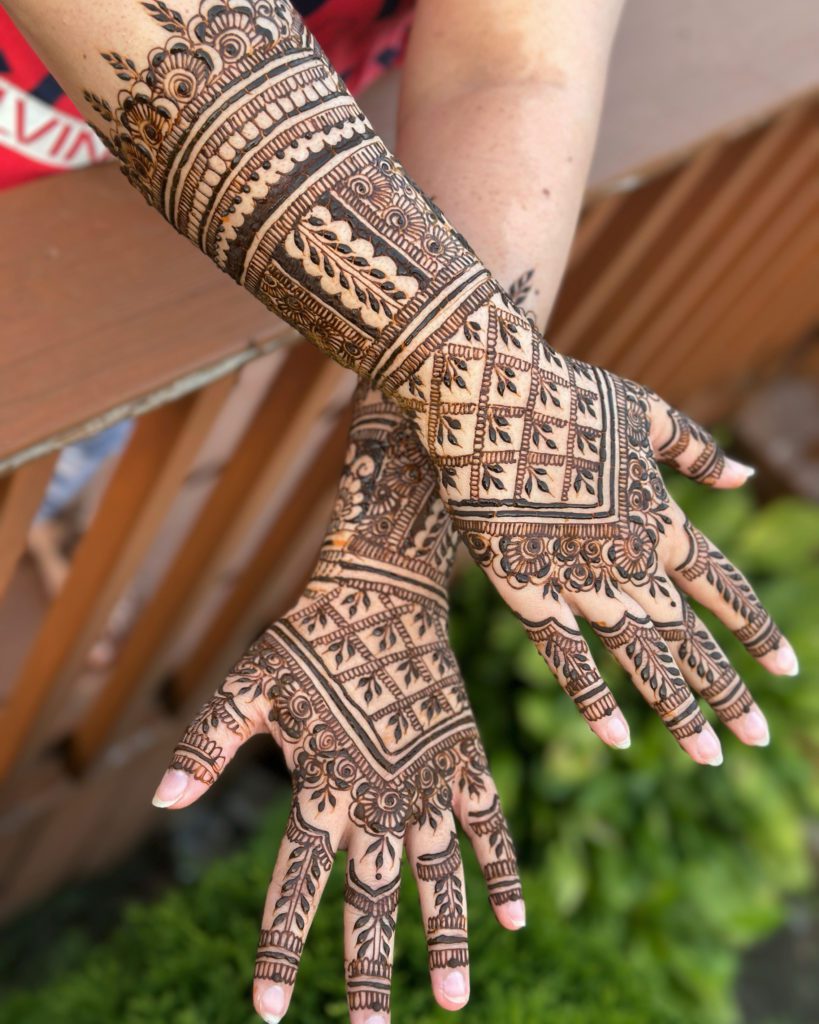About US

The History of Henna in South Asian Culture
Henna, or Mehndi, is a popular form of body art used in many parts of the world in traditional celebrations. In South Asian culture, the most popular use for henna is as part of a wedding celebration, and brides from as early 5000 years ago have decorated their hands and feet with henna designs.
What Is Henna?
Henna is a dye made from powdered leaves of the henna plant, which leave a stain on the skin when mixed with water and other ingredients. Henna is often made with lemon juice, strong tea, or certain essential oils that will improve consistency and stain.
Henna also has medicinal qualities and has been used as a healing herb in traditional Eastern healing practices like Ayurveda. In modern Ayurveda practices it can be used as a sunblock or an insect repellant, and it also has cooling properties to soothe the skin and calm the nerves.
Traditional Uses for Henna
Henna is a form of decoration used for special occasions, dating back to 7,000 BC. Traditionally, both religious and secular celebrations are occasion for festive henna designs, and henna has been used by many major religious groups in the eastern Mediterranean and South Asian regions for thousands of years.
In South Asian culture, Henna is most commonly worn by brides and is often thought of as lucky, or as a symbol of the bride’s joy on her wedding day. Bridal henna is worn on the hands and feet and it is said that the darker the stain of the design, the longer the marriage will last.
Henna is incorporated into wedding rituals through the Mehndi Night, which is a celebration where the bride receives her Mehndi design, and other female relatives and wedding guests can have henna applied as well. Traditionally, this celebration is the night before the wedding, when family and friends can come together to entertain the bride as she sits (often for hours!) and celebrate the wedding and the happy couple!


Modern Henna in South Asian Culture
Henna is still a popular choice for many brides in South Asian cultures and is incorporated into a variety of wedding celebrations in modern times. While modern brides may update their traditions with a more casual Mehndi Night or a henna party that is separate from the traditional proceedings altogether, henna is still a beloved symbol of celebration.
There are endless designs for henna decorations, in both traditional and modern styles. Brides can choose designs for fertility, and luck, or even have their new initials and their partner’s initials incorporated into the design.
Henna has also been adopted by Western culture as a form of hair dye and temporary body art. Celebrities have embraced the practice and now many Westerners have henna applied for weddings, celebrations, or as a way to naturally color their hair.
